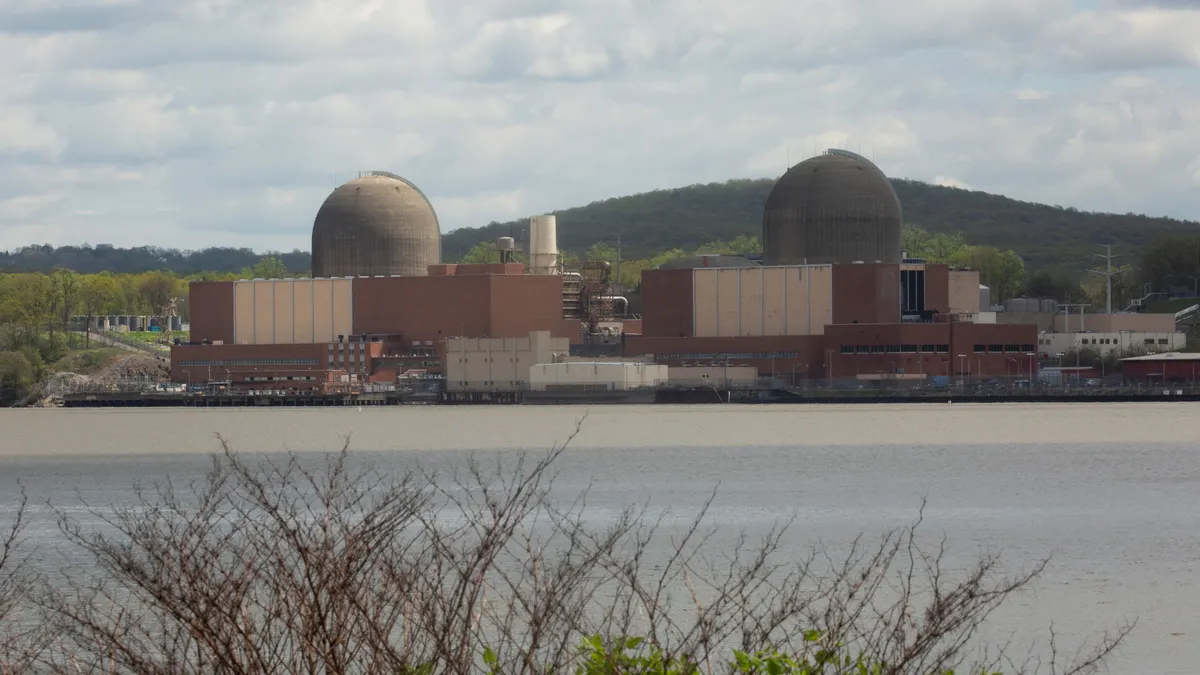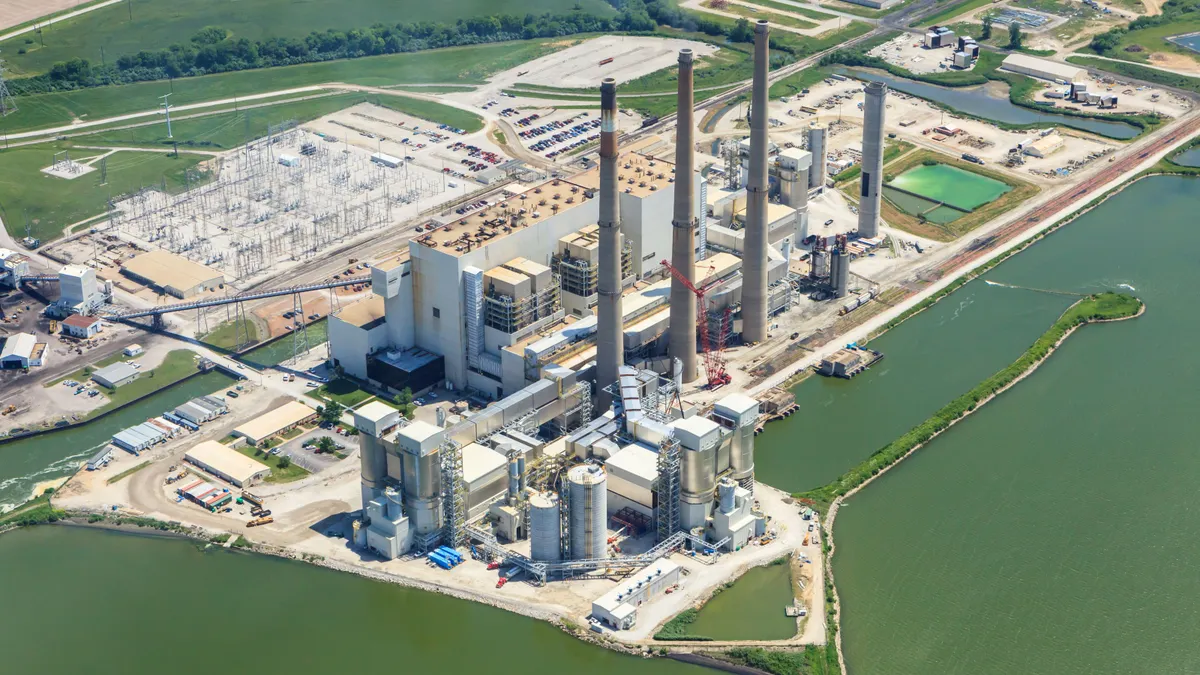The Chairman of the Arizona Corporation Commission called a May 19 staff consultant's report "a scathing assessment of Arizona Public Service's (APS) customer outreach and education program."
The commission is reviewing the customer education and outreach plan implemented by APS, and is considering the possibility of reopening the utility's 2017 rate case.
The commission will hold a special open meeting June 18 to discuss the report, Commissioner Boyd Dunn's office told Utility Dive. The findings demonstrate the APS customer education and outreach did not comply with the commission's orders in the 2017 rate approval, according to Chairman Robert Burns.
In light of the staff report, Burns wrote in the docket that customers may be entitled to refunds.
The consultant's review of APS's customer education and outreach program found several deficiencies when compared to industry "best practices." APS is the primary subsidiary of holding company, Pinnacle West Capital.
In comments submitted to the commission's docket, Burns suggested APS may have over-earned millions of dollars due in part to its possibly inadequate education and outreach program.
Burns invited APS to present evidence at the commission's June open meeting to challenge the accuracy of the consultant's report. Burns, acting as commissioner in 2017, was the sole dissenter in the decision approving APS's demand charge and time-of-use rate design.
"I appreciate Chairman Burns giving APS yet another opportunity to come in and explain themselves," Commissioner Sandra Kennedy said in comments submitted to the commission docket.
"But at what point do we stop listening to the fabrications and look at the evidence before us? APS' continued over-earning on the backs of ratepayers needs to stop," Kennedy wrote. She called on her fellow commissioners to reopen the 2017 rate case at the June meeting.
APS released a statement in response to a call for comment.
"Our focus is on learning all we can from the findings and continuously improving in the area of customer communications. We are reviewing the report closely with a focus on the recommendations that benefit our customers," the company said in an email to Utility Dive.
The May 19 staff consultant's report found several problems with the development and implementation of APS's plan.
In the report, consultant Barbara Alexander compared APS's customer education and outreach program to plans developed by Southern California Edison and adapted by other California investor-owned utilities. Although no other investor-owned utility has implemented a demand-charge and time-of-use rate design like APS', Alexander said the California experience provided the closest comparison.
Alexander identified a number of deficiencies in APS' plan, including:
- APS ignored input from consumer organizations concerning how the plan would be implemented; information on messaging, reporting; and performance metrics;
- The plan failed to identify risks and barriers to achieving its objectives, such as: rate design changes for all customers, changes to rate design with rate increases, a short time period for education, no significant change in bill presentation, bill impact projections based on annual costs while customers pay bills monthly, and lack of bill protections or exemptions for low-income customers or customers with special needs; and
- The plan did not include any performance metrics or methodology, instead tracking the plan's implementation through numbers of advertisements and social media posts published, web pages visited, meetings with APS personnel as speakers, bill inserts, and customer communications issued.
With no performance metrics, APS's plan failed to conform to best practices, Alexander wrote. The company's call center performance has been and continues to be below average. APS did not develop targeted educational messages for low- or fixed-income residents or conduct research to determine customer comprehension or understanding of its messaging, she concluded.
Alexander noted that APS renamed all of its rate plans after submitting the education and outreach plan to the commission.
Alexander did not recommend that the commission or commission staff develop a customer education and outreach plan. Instead, she recommended the commission order APS to develop a customer education plan concerning rate design options and integrate its education program with limited-income programs, demand side management programs and consumer protection rights and remedies to ensure retention of essential electricity service. Alexander also recommended the commission adopt a series of performance standards and require APS to report quarterly on its performance.
Other consumer stakeholders had previously raised concerns with APS' education and outreach plan.
"The commission consultant's report highlights deficiencies that advocates pointed out when the plan was first proposed, including lack of specificity about metrics, budget, and messaging," Diane Brown, executive director of Arizona PIRG (Public Interest Research Group) Education Fund, told Utility Dive.
Arizona PIRG Education Fund was part of a group of consumer organizations, including the Sierra Club–Grand Canyon Chapter and Southwest Energy Efficiency Project, that filed comments saying the company's draft customer education and outreach plan was unclear. The APS plan lacked sufficient details on messaging, content and tactics, as well as the enrollment and transition process, according to the groups.
Brown said appropriate metrics would include the number of customer complaints, a review of the information on company web pages, awareness of rate plans, and the amount of media coverage of programs the utility offers to help ratepayers reduce their electric bills.
"I wasn't surprised by anything in the report. Although she did go into much greater depth than I expected," Cynthia Zwick, executive director of advocacy group Wildfire, told Utility Dive.
"It would be helpful to know what APS has learned from the program, as well as the shift in rate plans," Zwick said. Wildfire, formerly known as the Arizona Community Action Association, also signed the consumer groups' 2017 letter seeking more details about APS' education and outreach plan.
The rate design was approved with the condition that APS would develop and implement a customer education and outreach plan.
"APS did what utility companies do, using the usual tools like bill inserts," AARP Associate State Director Stephen Jennings told Utility Dive.
Jennings agreed with the consultant's findings, but also suggested APS's rate plan offerings are too complicated for residential utility customers.
"People don't have time to look through six different plans," Jennings told Utility Dive.
AARP does not support demand charge rates for residential customers who lack the resources that commercial and industrial customers have to manage their electricity demands, Jennings said.
"We also don't think it's fair to force new or moving customers onto demand rate or time-of-use rate plans," Jennings said. AARP believes residents should have the option to choose any rate plan at any time.
Arizona consumers filed a complaint organized through change.org with the commission in January of 2018, alleging residents' electric bills were much higher than APS had predicted. The complaint eventually was dismissed on the recommendation of a commission administrative law judge.
"The commissioners can and should send the message to APS to proactively revise their pending rate case with ratepayers, not shareholders, in mind. Reducing the return on equity would be a great place to start," Arizona PIRG Education Fund's Brown said.
Commission members offered no response beyond the docket submissions.





















